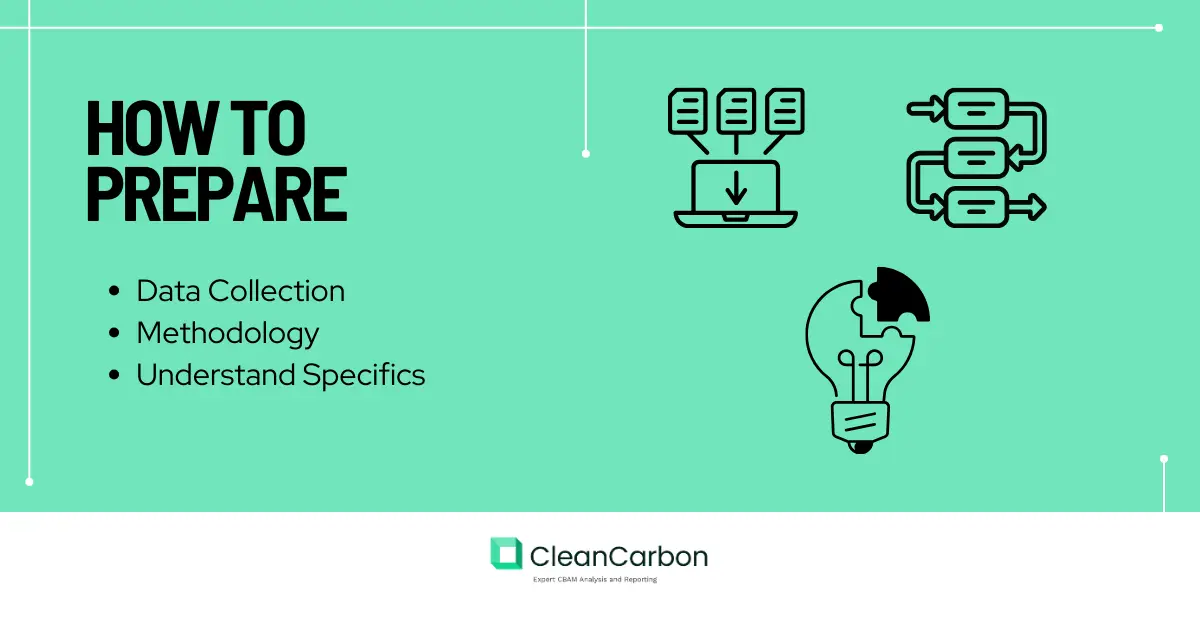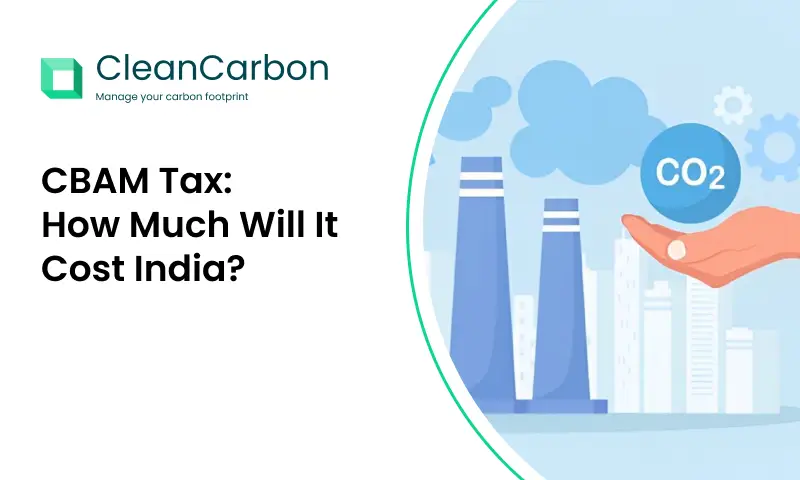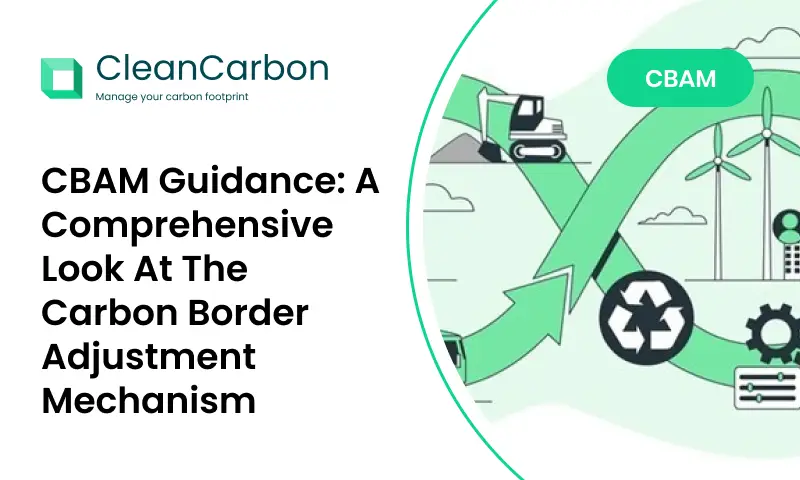Under the CBAM reporting rules, there are some special parameters for the iron and steel sector. In this blog, we understand specific reporting rules and requirements for the iron and steel sector.
CBAM for Iron and Steel: The European Union’s Carbon Border Adjustment Mechanism is already affecting the iron and steel industry across the globe. The Indian iron and steel sector, which is the second largest producer in the world, is under tremendous pressure due to CBAM. There are different reasons for it, including the increasing volume of trade with the EU, emissions intensity in the Indian steel sector, lack of digital infrastructure and inadequate data collection systems.
For example, a steel manufacturer which has been in business with the EU for years can not suddenly submit the embedded emissions report as it never invested in data collection and emissions accounting methods.
CBAM which has been introduced to prevent carbon leakage and facilitate pay parity for all traders inside and outside Europe, actually causing some greater economic ripples than imagined earlier.
In this blog, we will understand CBAM reporting rules for the iron and steel industry.
CBAM for Iron and Steel - reporting rules

CBAM reporting rules for the iron and steel sector products mandate that the quantity of goods imported into the EU should be expressed in metric tonnes. The suppliers must also maintain the record of CBAM-covered goods manufactured at the installation during every production process. Furthermore, data for both direct and indirect emissions have to be collected under the CBAM.
Under the indirect emissions, quantity of electricity consumed (MWh), source and emissions factor used to calculate the indirect emissions in tonnes (metric) of CO2 or CO2e are to be reported. Most importantly, indirect emissions for iron and steel products only to be reported during the transitional period only and not for the definitive period. Notably, precursor details are only shared for some production processes and routes in the iron and steel sector. Suppliers are also required to report emissions data in metric tonnes of CO2 equivalent (t CO2e) emissions per tonne of output.
Data for the associated activities including the production, melting and refining of th\e iron and steel and ferrous alloys are also to be collected for accurate CBAM report generation.
Different products covered under CBAM are identified using the Combined Nomenclature (CN), a product classification system that defines the key characteristics of goods. For the iron and steel sector, the CN system is used to precisely categorise products. It consists of two main elements: a numerical code and a brief product description. The numerical code can be 4, 6, or 8 digits long, indicating increasing levels of detail. The first 6 digits align with the Harmonized System (HS) used globally in international trade, while the last 2 digits are specific to the European Union. The accompanying text describes the essential features of each product category.
Sector specific CBAM reporting rules for iron and steel
CBAM mandates different reporting rules for diverse production processes and routes to maintain a high level of data accuracy. Here is a look at different production processes and routes rules:
Sintered ore production process
Sintered ore is a key raw material in the steel manufacturing process, produced by agglomerating fine iron ore with fluxes like limestone or dolomite and solid fuels such as coke.
According to the CBAM Implementing Regulation (Section 3, Annex II), companies involved in sintered ore production must monitor both direct emissions—including those from fuel combustion and process materials—and indirect emissions from electricity consumption used in the production process.
Importantly, no precursors are considered applicable for this specific production route. The defined system boundaries cover all core production steps, including material handling, agglomeration, thermal processing, and emissions control systems. Businesses engaged in this process must ensure full compliance with these monitoring requirements to meet CBAM reporting obligations.
Ferro-alloy production processes
Ferro-alloy production processes (FeMn, FeCr, FeNi) involve reductive smelting in electric arc furnaces (EAF) using coke and other additives. For FeNi, pre-treatment includes calcination and pre-reduction. CBAM reporting requires monitoring direct CO₂ emissions from fuels, electrodes, and inputs like limestone, as well as indirect emissions from electricity. The system boundary includes raw material prep, EAF smelting, refining, casting, crushing, and emission controls. Sintered ore may be a precursor, and mass balance methods apply for carbon in by-products.
Pig iron – Blast furnace production route
The blast furnace route produces pig iron by reducing iron ore with fuels like coke and coal. Inputs include sintered ore, pellets, and reducing agents. CO₂ emissions must be monitored from fuels, carbonates, and flue gas treatments. Indirect emissions from electricity also apply. System boundaries include raw material prep, hot metal production, fuel handling, emissions control, and auxiliary operations.Relevant precursors are monitored if they are used in the production process. A mass balance method tracks carbon inputs and outputs. Pig iron with <10% nickel is included; >10% falls under ferro-alloys.
Pig iron – Smelting reduction production route
Smelting reduction produces pig iron by reducing and melting sintered ore, iron ore pellets, or ironmaking residues using fuels like coke, coal, or natural gas. CO₂ emissions from fuels, carbonates, and flue gas cleaning must be monitored, with indirect electricity emissions also included. The process includes raw material handling, fuel prep, smelting, casting, and emissions control. A mass balance method tracks carbon in products, slags, or wastes. Relevant precursors include sintered ore, DRI, ferro-alloys, and hydrogen, if applicable.
Direct Reduced Iron (DRI) production process
Direct reduction produces solid iron (DRI) from high-grade ores using fuels like natural gas, hydrogen, or biomass. It includes steps like raw material prep, fuel handling, reduction, optional HBI formation, and emissions control. CO₂ from fuels, carbonates, and flue gas treatment is monitored, along with indirect electricity emissions. Precursors may include sintered ore, hydrogen, pig iron, or ferro-alloys. Carbon balances are calculated using the mass balance method. If DRI isn’t sold or transferred, it may be reported within a combined steelmaking process.
Crude steel – Basic oxygen steelmaking production route
Basic oxygen steelmaking (BOF) converts hot metal (pig iron) into crude steel, followed by decarburisation (AOD/VOD), secondary metallurgy, casting, and primary hot-rolling or forging into semi-finished products (CN 7207, 7218, 7224). CO₂ emissions from fuels, carbonates, and process inputs are monitored, along with indirect electricity emissions. Carbon in scrap, alloys, or slag is tracked via mass balance. Relevant precursors include pig iron, DRI, and ferro-alloys. Emissions control, auxiliary processes, and only primary shaping operations fall within the defined system boundaries.
Crude steel – EAF steelmaking production route
Electric arc furnace (EAF) steelmaking uses ferrous scrap and/or DRI as feedstock, with electricity as the main energy source. It includes smelting, optional decarburization (AOD/VOD), secondary metallurgy, casting, and primary hot-rolling/forging into semi-finished products (CN 7207, 7218, 7224).
Emissions monitoring covers CO₂ from fuels, electrodes, process materials, and indirect electricity use. Carbon flows are tracked via mass balance. Relevant precursors include pig iron, DRI, and ferro-alloys. Emissions control and auxiliary processes are part of the defined system boundaries.
Iron or steel products production process
Iron or steel products are made by further processing crude steel or semi-finished steel through forming and finishing steps like rolling, forging, coating, and welding. Emissions monitoring includes CO₂ from fuel combustion and process emissions during operations such as re-heating, casting, galvanizing, and finishing. Indirect electricity emissions are also considered. System boundaries cover raw material preparation, forming processes, finishing activities, and emissions control. Relevant precursors include crude steel, pig iron, DRI, ferro-alloys, and other steel products used in the process.
Why choose Clean Carbon for CBAM compliance?
With an experience in helping more than 200 companies become CBAM compliant and save their trade with the European Union, Clean Carbon is the only platform which specialises in CBAM for all sectors. It covers all areas and aspects of CBAM reporting so deeply and puts its entire energy and attention to one thing.
Hence, it is a domestic and international leader in CBAM reporting with the help of cutting edge technology and domain expertise. Its comprehensive CBAM reporting tool offers integrated data management with ERP-integrated solutions for automated emissions tracking, supply chain emissions analysis with accurate Scope 1, 2, and 3 emissions tracking, customised, EU-Compliant reports, real-time compliance dashboards, dedicated CBAM experts, an field support.







